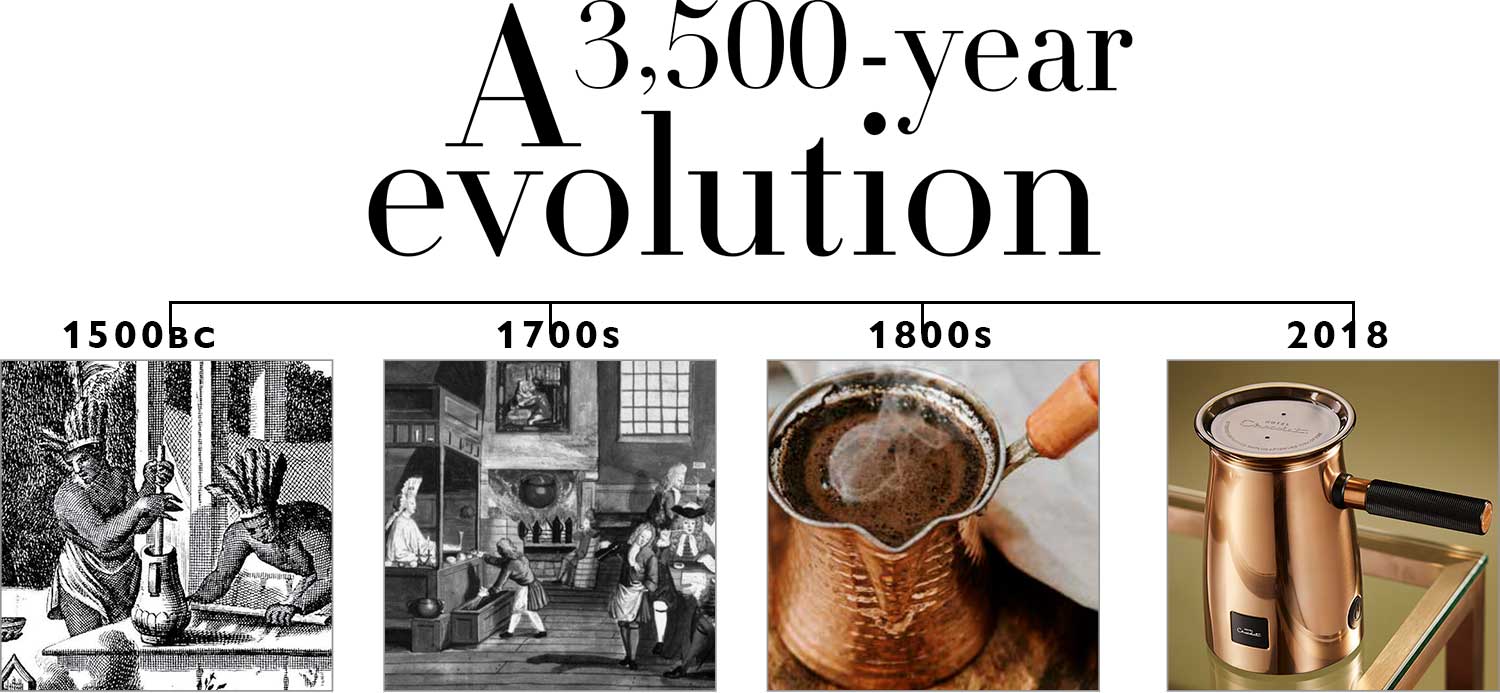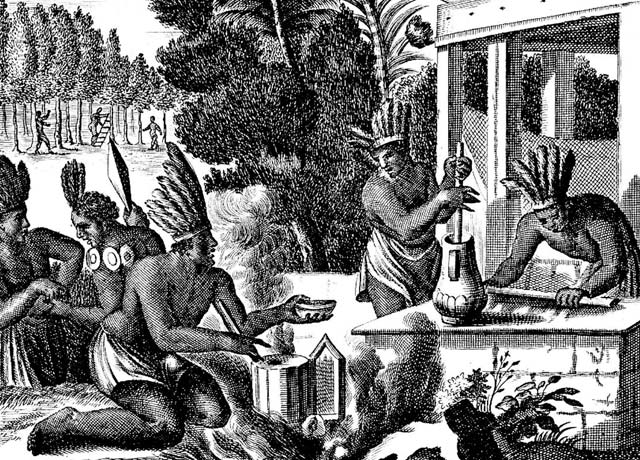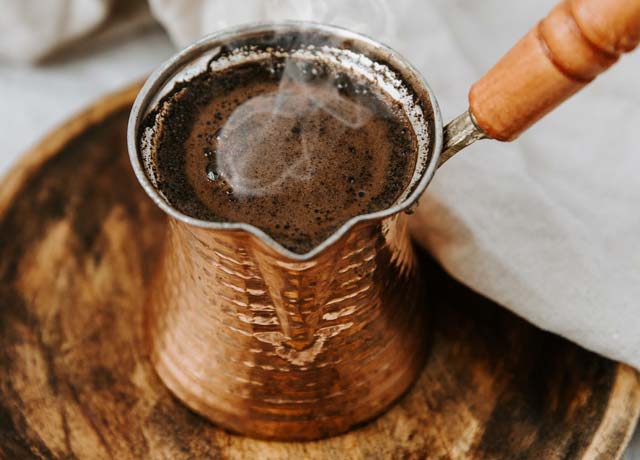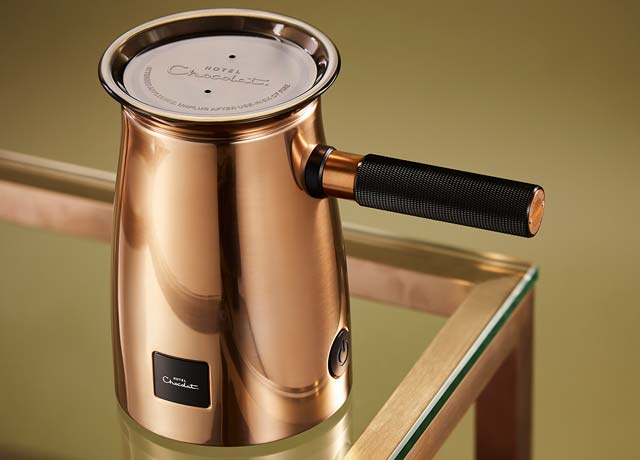- OUR RECENT TWEETS
The History Of Hot Chocolate
As you wrap your hands around hot cocoa and steam rises, every wonder where it all began? Trace the history of hot chocolate, march with Mayans through to 2018. This way for perfect hot chocolate at home.
What did the Mayans drink?
1500BC
Cast your mind back 3,500 years. Mayans worshipped xocolatl (or bitter water) made with crushed cocoa, cornmeal and chilli pepper. Their drinking chocolate cup of choice? Large vessels with spouts, coveted, yet not so practical. To create a foam they would pour liquid back and forth between bowls from a height – like ancient baristas.
1. Aztecs. Cocoa had kudos.
1400s
Montezuma II, Aztec emperor of Mexico stockpiled cacao from those he conquered. Clearly thirsty work, he drank 50 golden goblets of the chocolate elixir a day. He insisted it was for the select few (himself), nobles and royalty.
Those willing to fight were also deemed worthy. Aztec warriors were powered by cocoa. Drinking chocolate was a regular part of their military rations; every soldier on a campaign received ground cacao pressed into wafers, ready to mix into water.
“This drink is the healthiest thing, and the greatest sustenance of anything you could drink in the world, because he who drinks a cup of this liquid, no matter how far he walks, can go a whole day without eating anything else.”
- Anonymous Spanish Conqueror, connected to Hernando Cortes
2. Spanish Royalty. Cocoa sets sail
Bad news for the Aztecs. Cocoa caught the beady eye of conquistadors. Cocoa can’t be blamed for the fall of the Aztec empire, yet it was a prized part of a conquering haul which set sail for Spain. In the early 1500s, explorer Cortez presented cocoa beans to the court of King Charles V. Loved by royalty, the bitter drink was adapted. Chilli pepper was vetoed in favour of sugar. Cold drinking chocolate evolved into Spanish hot chocolate.
3. Europe. Hangovers and chocolate houses.
1700s
A chocolate revolution ignited in Europe, spread to France and soon reached London. Chocolate houses centred around St James’s Square bustled with nobles, debaters, aristocrats and Samuel Pepys (with a sore head). London had 700 wildly popular drinking chocolate houses where the diarist Pepys hurried to cure his hangovers.
"Waked in the morning with my head in a sad taking through the last night’s drink... so rose and went out... to drink our morning draft, which he did give me in chocolate..."
Samuel Pepys
4. Stoves, simmering and stirring
1800s
Ways to make hot cocoa also became ever more artful. Beautifully designed copper stove-top ‘chocolatières’ needed 25 minutes of simmering and stirring. Stunning yet impractical. Pan watching was a pastime as boiled milk would ruin the end result.
5. Velvetiser. Hot chocolate evolves.
2018
Make it like a pro
Early Mayans knew the importance of a good cocoa foam. But it took strenuous work to achieve it. Their ingenious wooden ‘molinillo’ inspired our electric version.
How to make hot chocolate like a pro? Take a short-cut through history with the Velvetiser designed by Hotel Chocolat. First add dairy or plant milk, then real chocolate flakes made with more cocoa, less sugar. Next push the button for an effortless velvety finish. How long to wait? Under 2.5 minutes.
"It made me dance, it made me Velvetise” - The Guardian
5/5
Perfect hot chocolate at home? Try our smile-raising Velvetiser.




